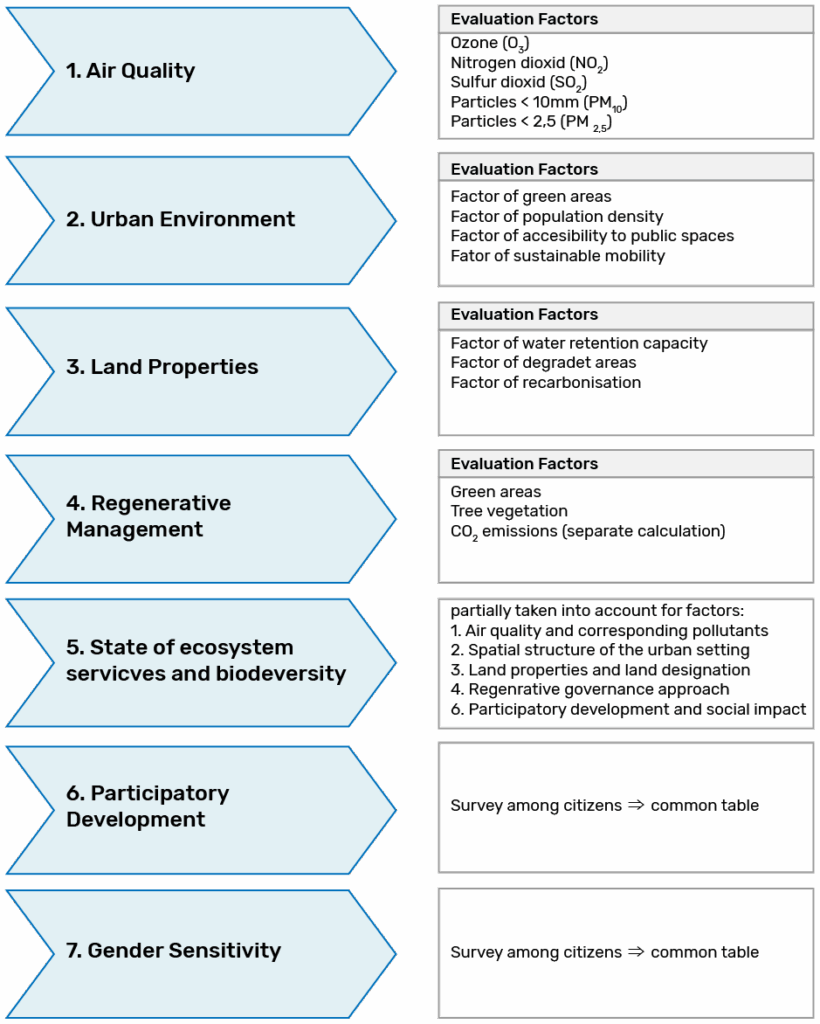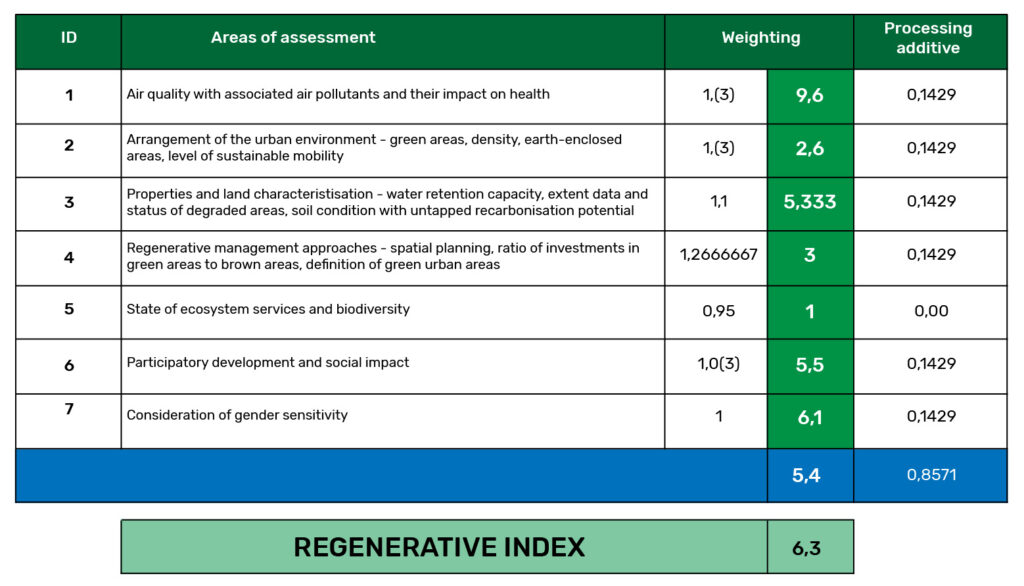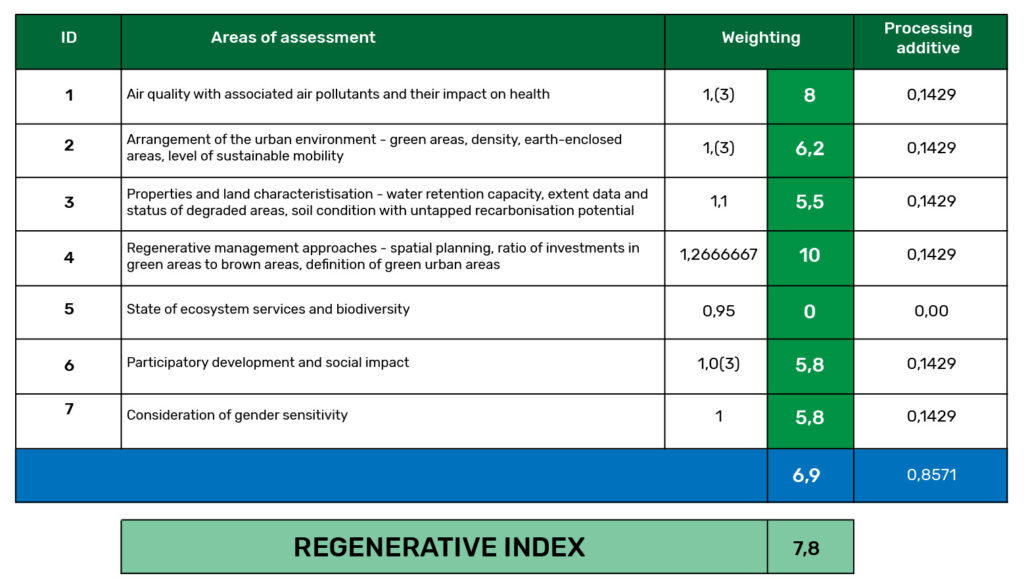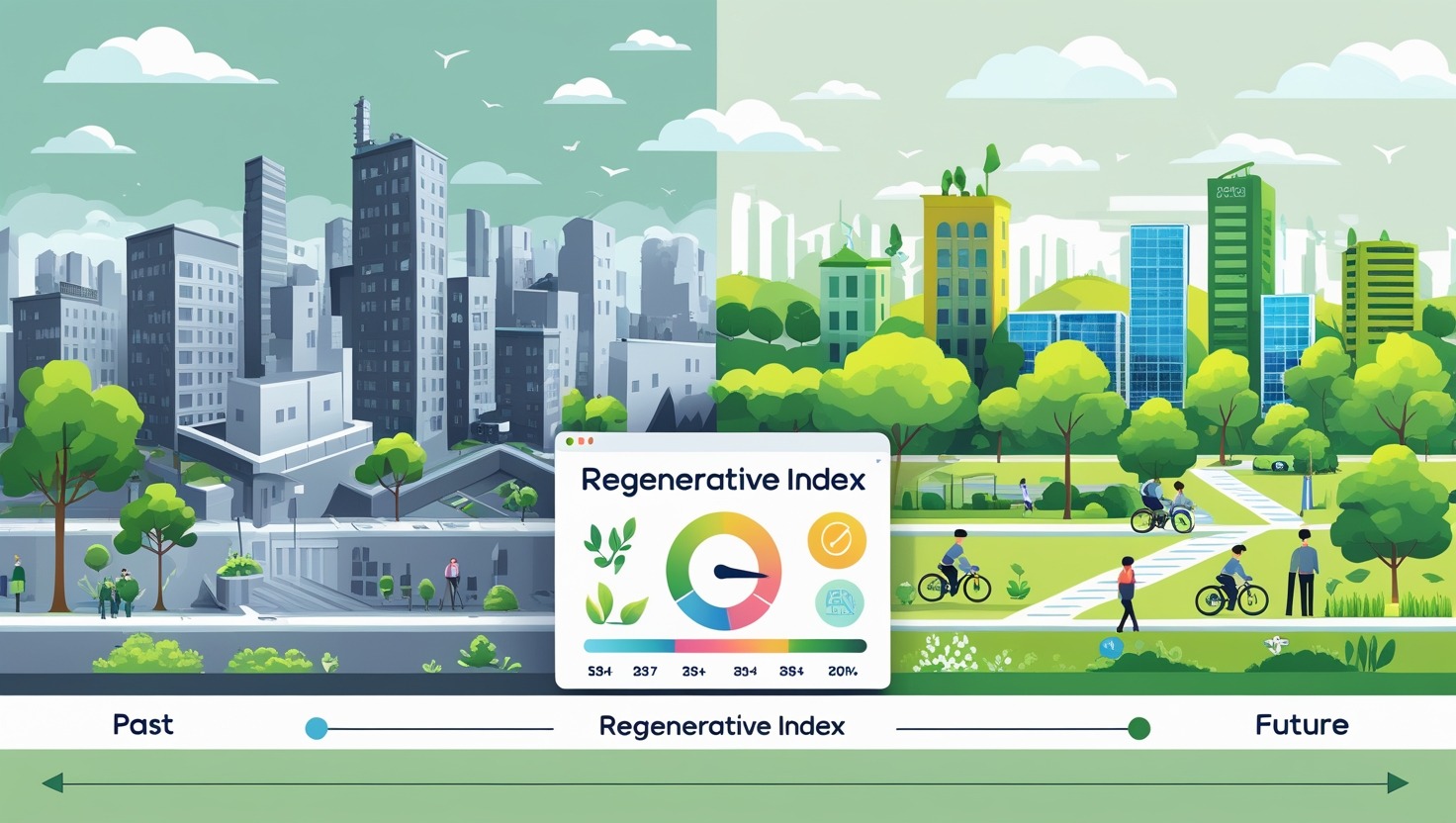
by Tadej Žurman
POR Consult, d.o.o.
With the excessive use of Earth’s resources and rising pollution levels, human activity has begun to disrupt the natural balance to such an extent that nature can no longer regenerate itself in real time. This anthropogenic degradation of the environment must therefore be addressed through equally anthropogenic regenerative actions.
Inspired by the work of the Footprint Data Foundation (FoDaFo)1, which maintains a system for calculating national ecological footprints and bio-capacity, the idea of developing a Regenerative Index was conceived. This Index encompasses seven indicative domains and is designed to reflect the degree to which an area supports environmental regeneration.
The Regenerative Index refers specifically to an anthropogenic regenerative index, representing a framework created by humans to assist nature in restoring balance in areas that have been heavily degraded. The Index rates an area’s regenerative status on a scale from 1 to 10. For example, a score of 3,4 indicates that the area is at 34% of the way toward achieving natural environmental balance.
The Regenerative Index assesses performance across the following seven interconnected domains (factors):
- Air quality and corresponding pollutants
- Spatial structure of the urban setting
- Land properties and land designation
- Regenerative governance approaches
- Ecosystem services and biodiversity status
- Participatory development and social impact
- Gender sensitivity consideration
Each domain is evaluated independently, and a weighted average is used to determine the final Regenerative Index score. The Index is designed to reflect conditions over a full calendar year, ensuring seasonal factors are accounted for.

Figures 2–4 display the initial Regenerative Index scores for participating UPSURGE cities2.



The UPSURGE cities’ Regenerative Index calculations form the basis for the development of Urban Insetting Protocols, which provide a framework for how cities can restore and balance their relationships with the ecosystems they depend upon.
The vision of Urban Insetting Protocols is to achieve the natural balance of the environment through regenerative urban (re)development in thematic areas aligned with the Regenerative Index’s seven assessment domains. Table 1 outlines the strategic and operational goals linked to each domain.
Table 1. Urban Insetting Protocols goals by thematic areas
| Strategic Goals | Operational Goals | |
|---|---|---|
| Air Quality | • Improved air quality to a level without excessive concentrations of pollutants | • Ambient air quality monitoring • Air quality maintenance and improvement |
| Urban Environment Management | • Sustainable urban structure | • Quality and connected green urban areas/green infrastructure for all citizens • Public space accessibility• Sustainable mobility |
| Land Properties | • Increased provision of the soil’s ecosystem services | • Sustainable land use • Soil carbon enhancement |
| Regenerative Management Approaches | • Urban Greening | • Regenerative spatial planning • Increased ability to capture anthropogenic CO2 in urban areas |
| Ecosystem Services and Biodiversity | • Improved biodiversity and ecosystem services | • Nature and biodiversity protection and restoration • Establishment of a management system for public green spaces, urban forests and natural values of local importance |
| Participatory Development and Social Impact | • Inclusive urban regeneration | • Participatory regenerative urban planning • Participatory regenerative management of the urban environment |
| Gender Sensitivity Consideration | • Gender equality | • Provision of equal opportunities and rights for all people, regardless of gender and sexual orientation • Provision of social (living and working) conditions according to the characteristics of the different genders |
The analysis of each city’s overall Regenerative Index score, along with the performance of each individual domain and their interrelations, informs the prioritisation of actions within the Urban Insetting Protocols. Based on the diagnostic outcomes, cities are encouraged to revise or develop strategic plans and implement targeted measures.
In the case of BP18, for example, recommended measures include the expansion of green areas (thus improving the Regenerative Index factor measuring spatial structure of the urban setting) and in particular long-term planting of shrubs and trees, critical for sequestering locally generated CO₂ (thus improving the Regenerative Index factor measuring regenerative governance approaches).
To monitor progress, annual Regenerative Index calculations are recommended. This helps assess the effectiveness of Urban Insetting Protocols and supports the ongoing refinement of actions based on achieved results.
Ultimately, the Regenerative Index serves both as a diagnostic and motivational tool, empowering cities to make evidence-based decisions and drive continuous improvement. Using the Regenerative Index as a monitoring tool can help bridge the gap between urban realities and strategic guidance, enabling cities to align their planning instruments with regenerative development principles. By measuring the territorial consequences of planning policies, the Index can be integrated into spatial planning practice as a central monitoring tool that strengthens the strategic capacity of spatial planning and supports its contribution to regenerative urban transformation. To increase its impact, the Regenerative Index should be actively promoted among and further developed with urban planners and policymakers to ensure its relevance and effectiveness.
- https://www.fodafo.org/why-fodafo.html, accessed 5 December 2024. ↩︎
- The shown Regenerative Index calculations do not yet include the revised calculation of the sustainable mobility sub-factor. Additionally, BP18’s calculations for the Factor of Participatory Development and Social Impact, as well as the Factor of Gender Sensitivity Consideration, need to be corrected. ↩︎

